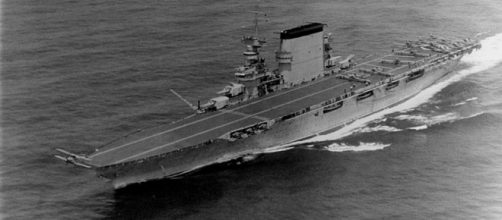The US aircraft carrier Uss Lexington was torpedoed by Japanese dive bombers in the Coral Sea on May 8, 1942 and sank. It happened on the last day of the four-day Battle of the Coral Sea, between Allied forces from the United States and Australia, and the Imperial Japanese Navy. The torpedoes struck the fuel tanks which exploded, and while many on board jumped into the waters to escape. More than 200 crew members were killed. The number of survivors was 2770.
Washington Post reports that Microsoft co-founder Paul Allen claims to have located the remains of the ship.
According to him, the ill-fated Wwii aircraft carrier is lying in the Coral Sea at a depth of two miles and about 500 miles off the eastern coast of Australia.
It is a major find
Paul Allen is not just a Seattle-based entrepreneur and philanthropist but a person who is interested in activities related to the environment. He owns a research vessel called R/V Petrel which he has modified to meet his requirements. It can dive to depths of 3 ½ miles and he has used it to discover many warships and artifacts that had gone to the bottom of the ocean.
His latest discovery is the WWII aircraft carrier USS Lexington that had been lying at the bottom of the Coral Sea in Australia for 76 years. Prior to this, he had located the USS Indianapolis in August.
Its resting place was at the bottom of the Philippine Sea. It was also the casualty of a Japanese submarine attack 70 years ago. Out of 1200 on board, 800 managed to escape. The waters were infested by sharks and many of the deaths were due to factors like dehydration, shark attack and starvation.
World War means losses
Last year, President Trump had paid tribute to the veterans who served during the Battle of the Coral Sea.
In the opinion of the Defense Department, this battle was a turning point in the war against Japan in the Pacific. No one wants a war, and when it involves different countries who join forces to create alliances to defeat a common enemy, it results in loss of lives and properties and people are driven out of their homes. Recovery is a long drawn out process and the trauma remains for a long time after the battle ends.
Fox News adds that once USS Lexington was evacuated, it was torpedoed by the USS Phelps to ensure that it did not fall into the hands of the Japanese. Commander of U.S. Pacific Command Adm. Harry B. Harris Jr. is aware of the horrors of WWII because his father was one of the sailors on board who was evacuated.


